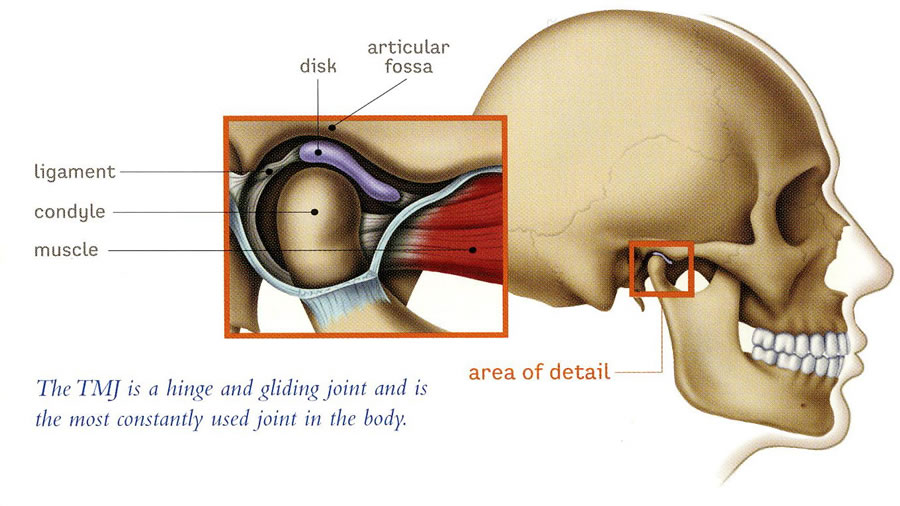The temporomandibular joint (TMJ) is located on either side of your head below your ears and are connected to your skull. This joint, in combination with other muscles and ligaments, lets you chew, swallow, speak and yawn. When you have a problem with the muscle, bone or other tissue in the area in and around the TMJ, you may have a TMJ disorder or TMD.
Temporomandibular disease (TMD) is a group of complex problems with many possible causes.
Some conditions that can lead to TMD are:
- Clenching or grinding of the teeth
- Injury to the jaw, head or neck
- Osteoarthritis or rheumatoid arthritis in the joints
- Stress, which can cause tightening of the facial and jaw muscles
- Dislocation of the disc between the jawbone and the socket
- A bite that is out of balance or misaligned
We recommend a complete dental and medical evaluation to properly evaluate patients with suspected TMJ disorders. Non-surgical, reversible TMD treatment includes jaw rest, heat and ice application, medications such as muscle relaxants and anti-inflammatories, splint therapy (mouth guards) and correction of an abnormal bite.

